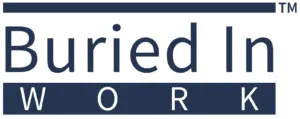Understanding the Silver Tsunami
-
Demographic Shift:
-
The Silver Tsunami describes the rapid increase in the proportion of elderly individuals within the population. As Baby Boomers age, the number of people aged 65 and older is growing at an unprecedented rate.
-
-
Longevity:
-
Advances in healthcare and living standards have increased life expectancy, contributing to a larger aging population. Many individuals are living well into their 80s and beyond, requiring extended periods of support and care.
-
-
Population Projections:
-
According to the U.S. Census Bureau, by 2030, all Baby Boomers will be older than 65, and the older population will outnumber children for the first time in U.S. history. This shift will result in significant changes in societal structure and resource allocation.
-
Why the Silver Tsunami Matters
-
Healthcare System Strain:
-
Increased Demand for Healthcare Services: An aging population will require more medical care, leading to higher demand for healthcare services, facilities, and professionals. This can strain the existing healthcare infrastructure and necessitate increased investment in healthcare resources.
-
Chronic Conditions: Older adults are more likely to suffer from chronic conditions such as diabetes, heart disease, and arthritis. Managing these conditions requires long-term care and specialized medical attention.
-
-
Economic Impacts:
-
Labor Force Changes: As Baby Boomers retire, there will be a significant shift in the labor force. The retirement of experienced workers can lead to skill shortages and increased competition for younger workers.
-
Pension and Social Security: The strain on pension systems and Social Security will intensify as more people draw benefits for longer periods. Ensuring the sustainability of these programs is a major financial challenge for governments.
-
-
Social Services and Infrastructure:
-
Increased Demand for Social Services: Services such as home care, assisted living, and transportation will see higher demand. Communities will need to adapt their infrastructure to accommodate the needs of older adults.
-
Housing: There will be a growing need for age-friendly housing that supports independent living and provides access to healthcare and social services.
-
-
Family Dynamics and Caregiving:
-
Caregiving Burden: Families may face increased responsibilities as they care for aging relatives. The emotional, physical, and financial strain on caregivers can be substantial, necessitating better support systems and resources.
-
Intergenerational Relationships: The Silver Tsunami will impact family structures, with more households becoming multigenerational as older adults move in with their children or other relatives.
-
-
Opportunities for Innovation:
-
Technological Advancements: The need for innovative solutions to support aging individuals can drive technological advancements in areas such as telemedicine, wearable health devices, and smart home technologies.
-
New Markets: The growing older population presents new market opportunities for businesses offering products and services tailored to senior needs, including healthcare, leisure, and financial planning.
-
Preparing for the Silver Tsunami
-
Policy and Planning:
-
Governments and policymakers need to anticipate the challenges of an aging population by investing in healthcare, social services, and retirement security. Strategic planning and policy reforms are essential to address the needs of older adults.
-
-
Community Support:
-
Communities should foster age-friendly environments that promote healthy aging, social engagement, and accessible services. Creating supportive networks and resources for seniors can enhance their quality of life.
-
-
Workforce Development:
-
Addressing the labor force impact involves training and retaining healthcare professionals, encouraging older adults to remain in the workforce longer, and facilitating knowledge transfer between generations.
-
-
Family and Caregiver Support:
-
Providing resources and support for family caregivers is crucial. This includes access to respite care, financial assistance, and educational programs to help caregivers manage their responsibilities effectively.
-
Conclusion
The Silver Tsunami represents a significant demographic shift with wide-ranging implications for society. By understanding the challenges and opportunities associated with an aging population, we can develop strategies to ensure that older adults receive the support they need while maintaining the sustainability of social, economic, and healthcare systems. Preparing for the Silver Tsunami is essential for creating a future where people of all ages can thrive.
If you have feedback, questions, or ideas for future articles or Information Hubs, please contact us. Your insights help us create valuable content.


